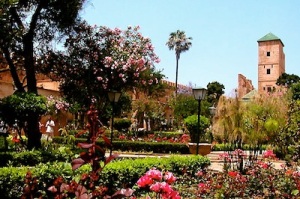Posts Tagged ‘Rabat tours’
Unlike many of its allies and neighbors, Morocco has remained quietly out of the political spotlight during recent years, having largely escaped the political unrest and revolution of the Arab Spring. Last year, however, the Kingdom was afforded the cultural limelight in Paris, France, in a series of events called…
Kasbah Des Oudaia in Morocco also referred to as Kasbah Oudaya or Kasbah Udaya, is located at the mouth of the Bou Regreg river opposite of Salé. Kasbah Oudaia has been the citadel of the Alhmohads, Merinids and Andalusians in Rabat. Its location on a rocky outcrop high above the level of the…
Rabat is located on the Atlantic Ocean at the mouth of the Bou Regreg River. On the facing shore of the river lies Sale, Rabat’s bedroom comunity. Tourism and the presence of all foreign embassies in Morocco serve to make Rabat the second most important city in the country after the larger and more economically significant Casablanca. There are a variety of historic tourist attractions in Rabat such as kasbahs, beautiful domes, minarets, wide avenues and green spaces which make for a fascinating half-day or full day Rabat tour




